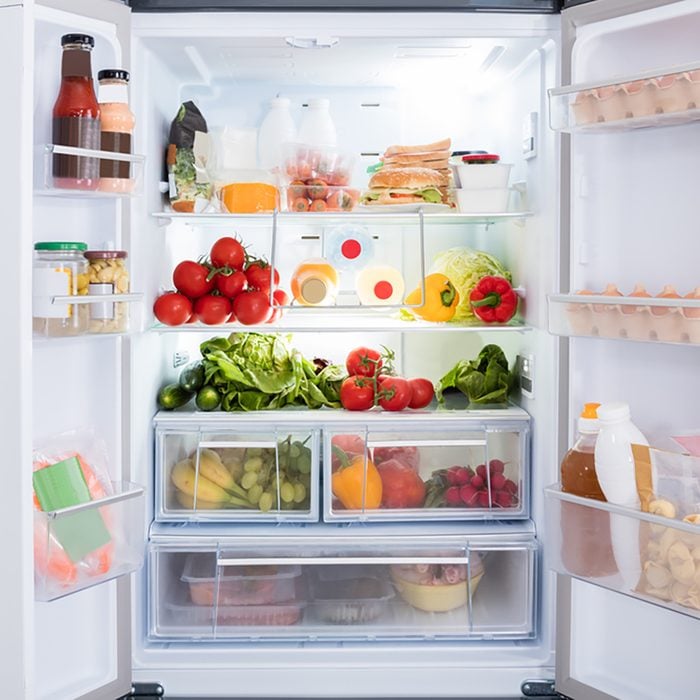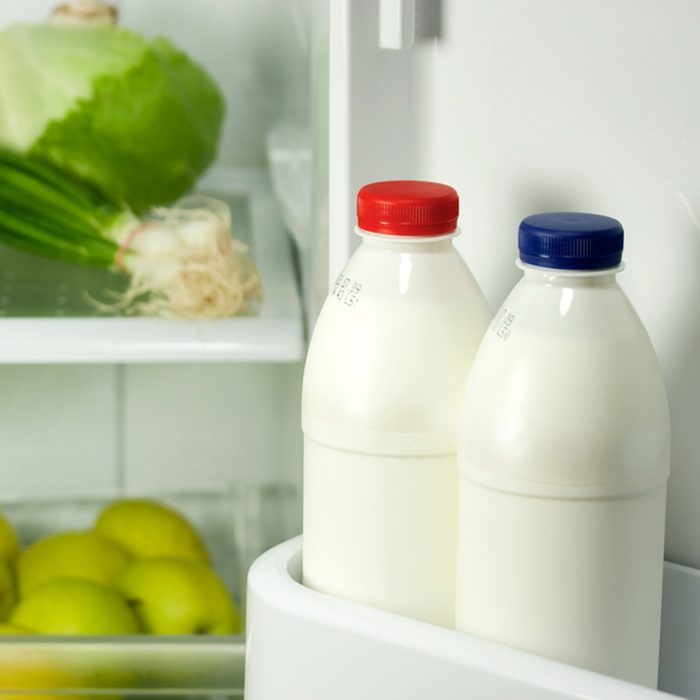
Milk
Wrong: Keeping milk in the fridge door.
It might be convenient, but your milk will spoil more quickly. Every time you open the door, the milk is exposed to a warmer temperature. If you take longer than a day or two to finish your milk jug, rethink this. Find out the real reason why milk is stored at the back of the store.
Right: Place milk in the back of the fridge, away from the door.
Keep milk in the coolest place of the fridge, usually the back of the top shelf, near the cooling vents. Enjoy your sweet (not sour!) dairy. Discover how long that gallon of milk really lasts.
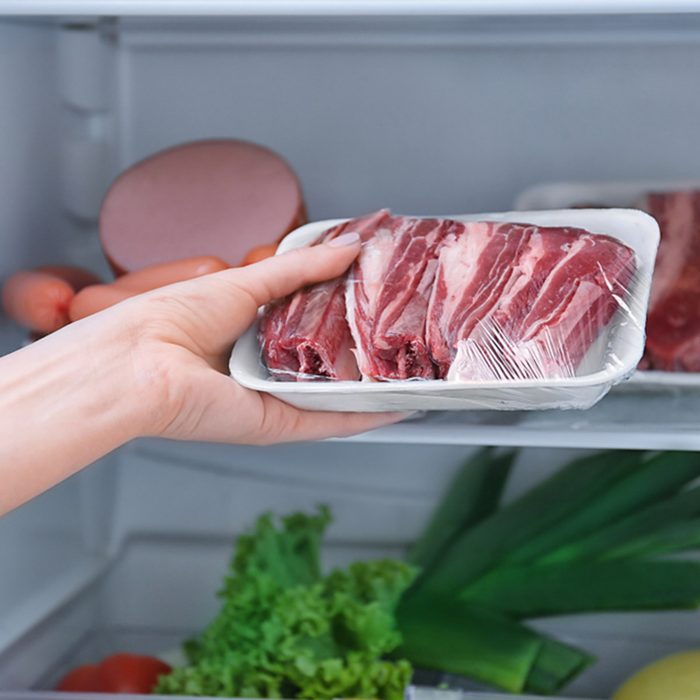
Raw Meat
Wrong: Keeping meat on the top shelf.
Raw meat spoils quickly, so it seems logical to store it where you can see it, right on top. But meat packages can leak, potentially contaminating other foods.
Right: Set the meat on a plate on the lowest shelf of the fridge.
For extra safety, use a plate or tray you can clean easily or toss after use. And make sure to get meat into the fridge as quickly as possible after buying it.
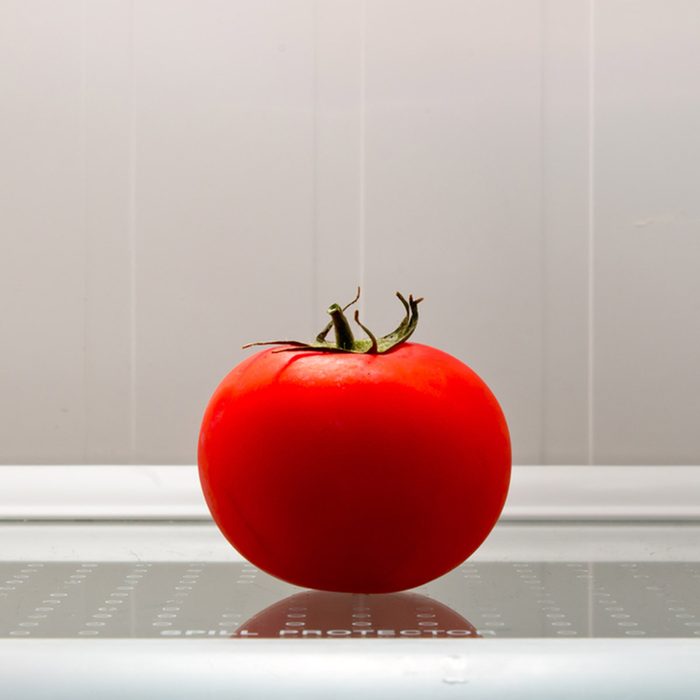
Tomatoes
Wrong: Storing tomatoes in the fridge.
All fresh produce should go in the fridge, right? Not quite. The fridge changes the texture of tomatoes, making them mealy. The chill also dulls the flavor (perish the thought!).
Right: Keep your fresh tomatoes together on the counter.
For perfectly juicy, meaty tomatoes, store on the counter at room temperature. If you’re worried about overripening, move them to the basement. Don’t pile them in a bowl, either. If one goes bad, it’ll quickly spoil the others (and the bottom tomatoes will get crushed). Set tomatoes on a plate with a little room for air to circulate between them. Check out other fruits and veggies you could be spoiling by storing them in the fridge.
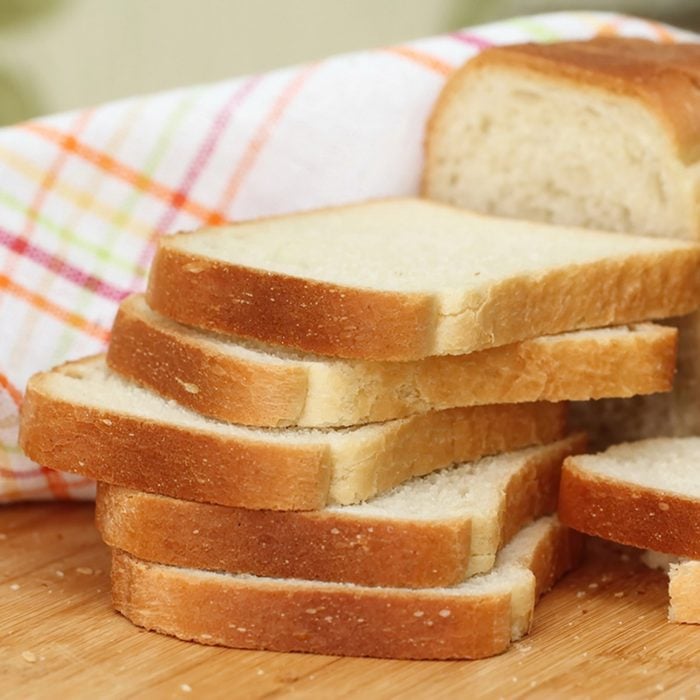
Bread
Wrong: Sticking a loaf in the fridge.
Sad truth: refrigerated bread will dry out more quickly and become tough.
Right: Cover and store at room temp.
To keep loaves and baguettes in tip-top shape, store them covered on the counter (or in a bread box if you have one). For long-term storage (more than a few days), it’s smart to store bread in the freezer. Wrap it in at least two layers, like a bag inside a bag or paper-wrapped inside a bag. To defrost, unwrap the still-frozen loaf and bake it at 350 degrees for 35 to 40 minutes. Or store it sliced and stick your bread in the toaster to defrost.
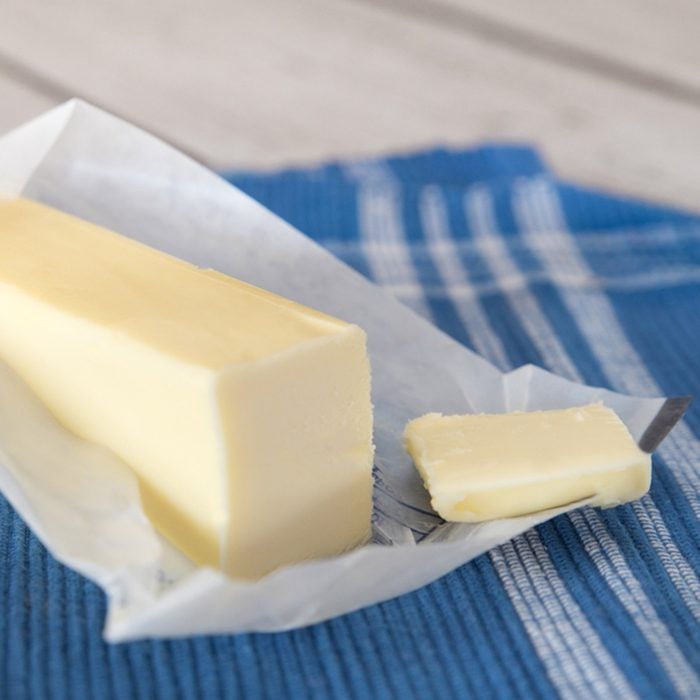
Butter
Wrong: Carefully keeping butter in the fridge at all times.
For long-term storage, it’s best to keep butter in the fridge. But there’s nothing worse than trying to spread a firm, cold pat of butter over bread.
Right: Leave the butter you’ll use within a day or two in a covered dish on the counter.
To keep butter, well, buttery smooth, take out what you need for a day or two and keep at room temperature. Still skeptical? Here’s how long you can keep butter on your counter.
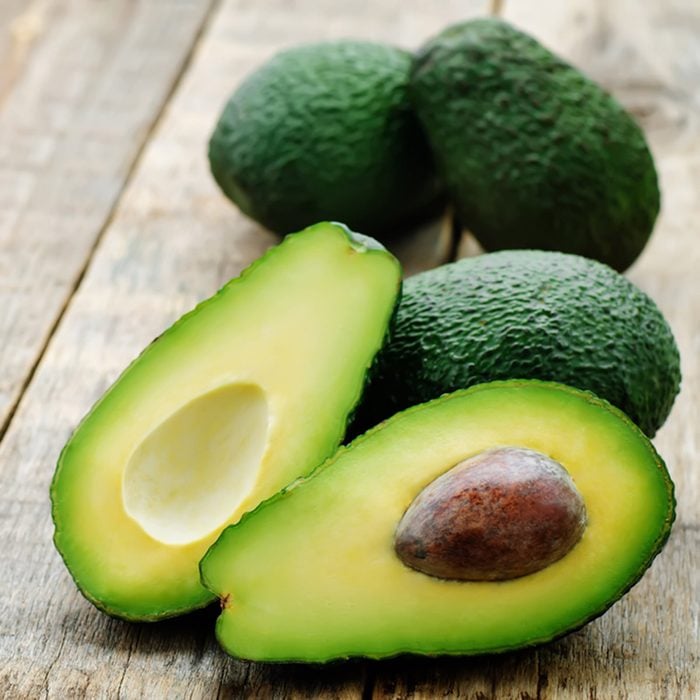
Avocado
Wrong: Putting avocados in the fridge, regardless of ripeness.
Unless you’re a fan of pale, unripe avocado, it’s best to leave the fruit on the counter until it’s ready to eat. Cooler temperatures can keep avocados from fully ripening.
Right: Leave it on the counter to ripen.
Once it’s reached peak ripeness, you can transfer it to the fridge for a few days. To store cut avocado, soak exposed flesh with a little lemon juice to prevent browning.
Ripen a hard avocado in a flash with this handy tip.

Bananas
Wrong: Leaving them in the fridge.
Left in the fridge, bananas will develop black peels, and may not fully ripen. The texture will also change, and not in a good way.
Right: Keep them bundled on the counter.
It’s best to keep bananas at room temp. To extend their shelf life, cover the top of the stems tightly in plastic wrap. If you have too many ripe bananas, peel and store in a zip-top bag in the freezer. They’ll be perfect for smoothies, oatmeal, or one of our other recipes that use up ripe bananas.
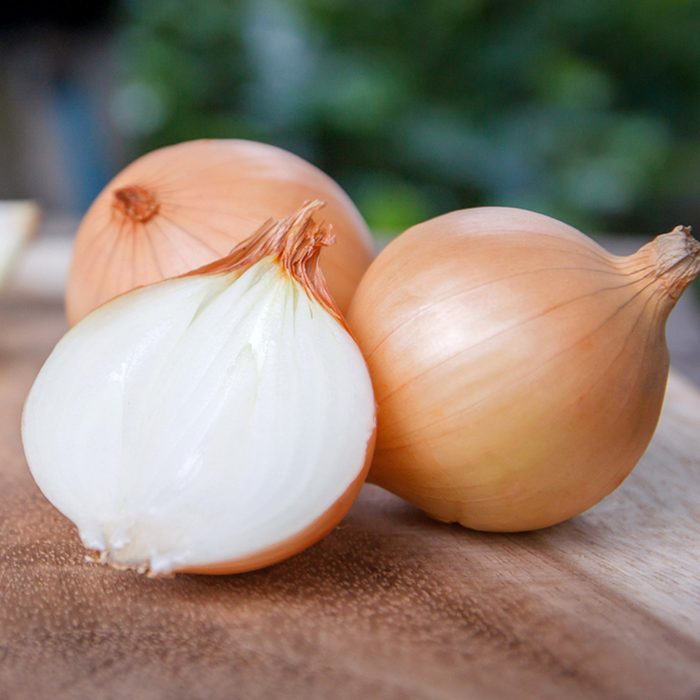
Onions
Wrong: Toss them in the crisper drawer.
Without enough air circulation, onions tend to get soggy in the fridge.
Right: Store onions in a cool, dark place.
They’ll last much longer in the pantry. Keep them in their mesh bag or store them in a breathable container. Just store them away from potatoes, or they’ll spoil quickly. Check out this guide to see which type of onion is actually best for your next recipe.
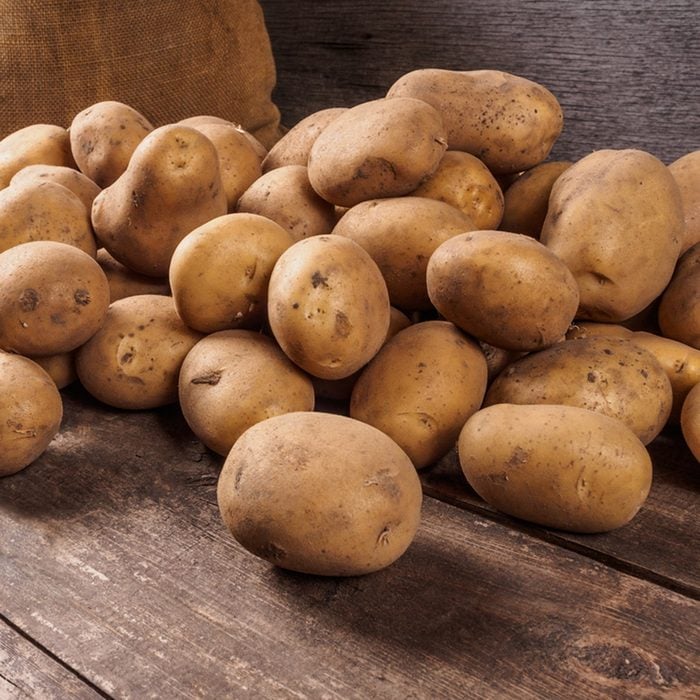
Potatoes
Wrong: Putting them in the fridge.
If you keep potatoes in the fridge, the starch will gradually turn into sugar. This gives them a slightly sweet and gritty flavor, not ideal for a spud!
An exception to the rule: if you’re prepping potatoes in advance, store cut potatoes submerged in water in the fridge. This prevents discoloring and makes dinner prep easier.
Right: Store whole potatoes in a cool, dark place.
Like onions, potatoes will keep for a long time in a pantry or basement.
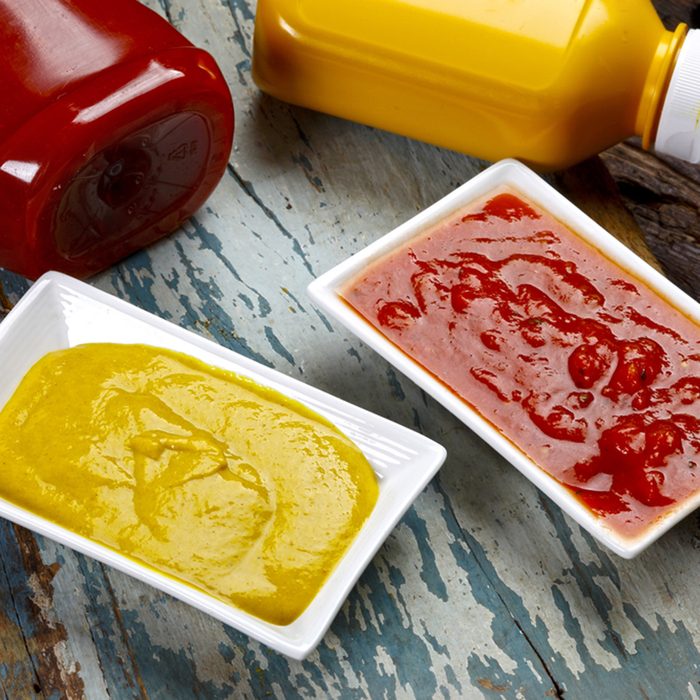
Ketchup & Mustard
Wrong: Letting them hang on the fridge door.
This one’s a bit of a cheat, since there’s no real harm in storing condiments in the fridge. But they do take up lots of space and can be easy to forget about.
Right: Store neatly in the pantry.
Ever notice that your favorite restaurants keep the Heinz out on the table? That’s because it’s safe to do so. Instead of letting condiments like ketchup, mustard and soy sauce take up valuable real estate in the fridge, shift them to the pantry. Try your hand at making a few homemade condiments with these easy recipes.

Olive Oil
Wrong: Storing olive oil in a clear glass bottle near the stove.
Having olive oil within reach of the stove is handy. But oil oxidizes easily from heat and sunlight, which makes it lose flavor and even start to taste rancid—which is a shame when you spring for the expensive bottle!
Right: Keep in a dark jar, away from heat and sunlight.
Keep the oil stored in a dark container in the pantry. This protects it from extreme temperatures and sunlight. This goes for expensive drizzling oils as well as everyday cooking oils.

Basil
Wrong: Chucking it in the fridge.
Unlike other fresh herbs, basil will wilt and darken in the fridge.
Right: Keep in a glass of water at room temp.
Keep basil fresh by cutting off the ends and storing in a glass jar of water at room temperature. I like to keep mine in a spare mason jar so it looks like a pretty green bouquet. If you prefer to dry your herbs, use this step-by-step guide!

Hard Cheese
Wrong: Keeping it in the store wrapping.
Once you open the wrap, the surface of the cheese will be exposed to the cold air in the fridge. This is a recipe for drying out your beautiful block of cheddar. Don’t do it!
Right: Cover with wax paper and store it in an airtight container in the fridge.
To keep cheeses like cheddar and Parmesan from becoming dry and stiff, wrap them a breathable material like wax or parchment paper, then wrap that in aluminum foil or slip it into an airtight container in the fridge. This preserves the texture of the cheese and extends its lifespan.
Looking to up your cheese game? Take a look at these cheesy accessories.

